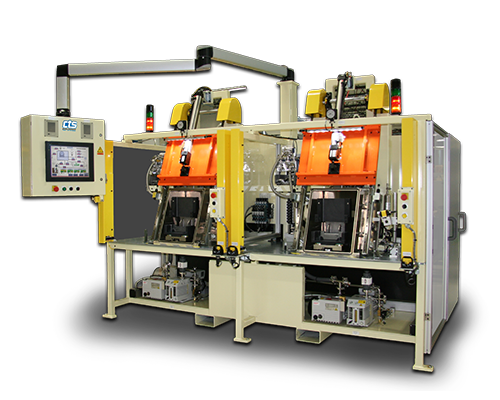Hard Vacuum Helium Leak Test Systems
Hard vacuum helium leak testing is the most accurate and efficient of all tracer gas leak detection systems and is used in production leak testing to test parts with very low (extremely small) leak rates. It provides better repeatability than other tracer gas leak detection methods, offers shorter cycle times, and is less susceptible to temperature and other external environmental factors.
Using the vacuum leak test method provides benefits including:
- Extreme sensitivity detects leaks up to 1 x 10-8 scc/s
- High repeatability and fast cycle time
- Very high leak detection accuracy reduces false leak failures
Helium hard vacuum tests provide reliable results for testing a range of parts including sensors, housings, medical devices, sealed components, electrical housings, HVAC and refrigeration components, and more.

Components of a Hard Vacuum Leak Detection System
- A vacuum chamber or device
- A pump for evacuating atmosphere from the part and/or chamber
- A mass spectrometer for measuring the mass of helium in or around the part
- For additional functionality, a sniffer wand can be added for leak location
- The systems can be configured to match the complexity of virtually any testing application and to accommodate manual or automated loading.
Vacuum Helium Leak Tests Provide a High Level of Accuracy
Vacuum helium leak tests can be performed using an “inside-out” or “outside-in” method. Both methods provide similar benefits, but the inside-out hard vacuum test can provide a higher level of sensitivity and has a reduced chance of human error since the testing process is automated. It also requires more equipment than an outside-in method performed by an operator.
The best method is the one that simulates the typical pressure differential applied on the part as it is used in normal operation. This allows the stresses and forces applied to the part to affect it like normal operating conditions so that there is less likelihood of masking a leak.
Inside-out vacuum leak test
In an inside-out vacuum leak test, a part is placed in a sealed chamber and secured. A vacuum pump is then used to remove all the atmosphere from the chamber and part. After a sufficient vacuum is reached, the test cycle begins.
A mass spectrometer is used to sample the chamber for helium while the part fills with helium to test pressure specifications. As the part fills, the mass spectrometer continuously samples for tracer gas escaping from the part, analyzing the helium molecular flow compared to the reject set point for the test. If helium measurements exceed the reject specification, the part fails the leak test.
Outside-in hard vacuum test
The outside-in hard vacuum test is performed outside of a chamber and involves evacuating the part and spraying helium gas around the exterior. If any leaks are present, the gas will flow to the interior of the part and be detected by the mass spectrometer, resulting in the part failing the leak test. This process may also be automated with a pressure chamber around the part.
Find the right tracer gas test method
Watch the webinar, The Essentials of Tracer Gas Leak Testing.
Learn More About Hard Vacuum Helium Leak Test Systems
We provide helium vacuum leak test systems and a broad range of other tracer gas equipment including recovery systems, tracer leak standards, and much more. Request a quote today or contact us for more information.